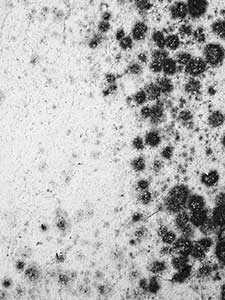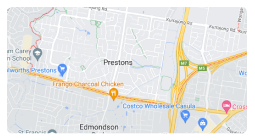Living in Sydney comes with a lot of perks: gorgeous beaches, stunning weather (most of the time), and vibrant communities. But if you’ve lived in this beautiful city long enough, you’ll know one less-than-glamorous reality—mould keeps coming back.
You scrub it. You repaint. You crack open the windows. And still, after a few weeks or months, it’s there again. That tell-tale musty smell. The creeping dark patches. It’s more than an eyesore—mould can affect your health, damage your property, and cost you thousands if not properly addressed.
Let’s break down the real reasons why mould continues to return in Sydney homes and how understanding them can lead to lasting solutions—not just temporary cover-ups.
1. Sydney’s Humid Climate

Sydney’s weather is one of its biggest charms—and also a key contributor to persistent mould problems. From coastal humidity to warm temperatures in summer, mould spores thrive in moisture-laden environments.
Think of bathrooms after long showers, kitchens without proper ventilation, or laundry rooms where clothes are air-dried indoors. All these spaces create the perfect storm for mould growth. When indoor humidity levels consistently hover above 60%, you’re practically handing mould an invitation to stay.
What You Can Do:
- Use a dehumidifier during humid seasons, especially in older or poorly ventilated homes.
- Install exhaust fans in high-moisture areas like bathrooms and kitchens.
- Regularly open windows when weather allows to improve airflow.
If you’ve already noticed signs of mould in these rooms, a mould inspection services can help pinpoint hidden problem spots before they become larger issues.
2. Leaking Pipes and Poor Plumbing
A leaky pipe under the kitchen sink or a dripping tap in the laundry might not seem urgent—but these small leaks are some of the top causes of recurring mould.
Moisture hidden behind walls, under flooring, or inside cabinets provides mould with a dark, undisturbed breeding ground. Since the area stays damp long after the leak starts, spores settle in quietly and multiply out of sight until it becomes a major problem.
What’s worse? Many homeowners fix the visible water issue but forget to deal with the mould left behind in the walls or timber.
What You Can Do:
- Schedule regular plumbing inspections, especially in older Sydney properties.
- If you’ve had a leak recently, book a mould specialist team to inspect for hidden contamination.
- Watch for tell-tale signs like bubbling paint, discoloured walls, or a musty smell.
3. Ineffective Mould Cleaning
You might think you’ve handled the problem after a good scrubbing session with vinegar or bleach. But here’s the thing: not all mould is surface-deep, and not all cleaning methods actually remove it.
Bleach, for example, may appear to clean mould on non-porous surfaces, but it often leaves behind spores and moisture, especially on drywall, timber, and grout. In fact, improper cleaning can make it worse by spreading the spores around your home.
This is where professional mould cleaning services stand apart. They use industrial-grade antimicrobial solutions, HEPA filters, and specialised containment techniques to prevent cross-contamination.
What You Can Do:
- Avoid DIY cleaning when mould covers more than a square metre or keeps coming back.
- Choose trained technicians who follow best practices in mould remediation in Sydneystandards.
- Always identify and eliminate the source of moisture—cleaning alone won’t stop mould from returning.
4. Poor Ventilation and Airflow
Sydney homes—especially older ones—often struggle with proper airflow. Sealed-up rooms, blocked vents, or furniture pressed tightly against the walls all reduce air circulation and trap condensation.
Let’s say you leave a wardrobe or couch against an exterior wall. Moisture from temperature changes builds up behind it, and without ventilation, mould finds the perfect hidden corner to fester. This problem is even more pronounced in tightly insulated modern homes that lack natural air movement.
What You Can Do:
- Rearrange furniture to allow walls to “breathe.”
- Open windows during the day and allow cross-ventilation.
- Install vents or fans in rooms that feel stuffy or consistently damp.
If your home feels constantly humid or smells musty despite regular cleaning, it might be time to get a mould inspection Sydneyreport to assess hidden airflow issues.
5. Delaying Professional Remediation
The longer you wait, the deeper mould roots itself into your home’s structure. Many Sydney homeowners opt for quick fixes or over-the-counter sprays, not realising that mould has likely spread into wall cavities, ceiling insulation, or floorboards.
In some cases, what looks like a small patch is just the tip of the iceberg. Behind that wall could be a colony spreading silently, causing wood rot, compromising your air quality, and even triggering allergic reactions or asthma symptoms.
Professional mould remediation services in Sydney do more than just clean. They:
- Contain the affected area
- Use HEPA vacuums and antimicrobial treatments
- Remove and replace contaminated materials when necessary
- Address root causes to prevent recurrence
What You Can Do:
- Don’t wait for mould to return before calling a professional.
- Choose companies that offer end-to-end mould remediation—from detection to repair.
- Make sure they’re experienced in Sydney’s climate and building materials.
Why Recurring Mould Is More Than Just a Cosmetic Problem
Beyond the stains on your walls or ceilings, mould is a serious health concern. It releases microscopic spores into the air, which can cause:
- Coughing, wheezing, and asthma flare-ups
- Eye, nose, and throat irritation
- Headaches and fatigue
- Skin rashes and allergic reactions
Children, the elderly, and immunocompromised individuals are especially vulnerable.
That’s why identifying the cause of recurrence isn’t just smart—it’s essential. With Sydney’s unique mix of weather, coastal proximity, and older homes, dealing with mould effectively means being proactive, not reactive.
Frequently Asked Questions (FAQs)
What’s the difference between mould cleaning and mould remediation?
Mould cleaningtypically refers to surface-level removal of visible mould, while mould remediationis a more comprehensive process. It addresses both the mould and the underlying causes (like moisture or leaks), often involving containment, decontamination, and repair of affected areas.
How much does a mould inspection cost in Sydney?
Prices vary depending on the size of your property and the severity of the issue, but a standard mould inspection in Sydneytypically starts from $250. A detailed inspection from a certified provider like SWHR includes moisture mapping, thermal imaging, and a remediation action plan if needed.
How quickly should I act on mould in my home?
Immediately. Mould spreads fast—especially in Sydney’s humid climate. The longer you wait, the more damage it can cause to your home’s structure and the more it can affect your health. If you notice a musty smell, discolouration, or persistent condensation, call in a mould specialist Sydneyteam right away.
Can mould come back even after it’s been removed?
Yes—if the root cause isn’t fixed. That’s why it’s crucial to work with a company that provides end-to-end mould remediation Sydneyservices, not just surface cleaning. Professionals like SWHR will identify hidden sources of moisture and ensure your home is mould-free for good.
Is mould dangerous for pets or children?
Absolutely. Pets and children are more sensitive to airborne mould spores. Symptoms can include skin irritation, respiratory issues, and allergic reactions. If you have young kids or pets, getting a prompt mould inspection Sydneyis even more critical.
Call SWHR Today for Professional Mould Remediation in Sydney
Recurring mould is more than just a cleaning problem—it’s a health hazard and a sign of deeper issues. At SWHR, we don’t just treat mould—we eliminate it at the source.
From thorough inspections and customised remediation plans to deep cleaning and moisture control, our experienced team ensures long-term results. We service homes, apartments, rentals, and commercial properties across Sydney.











